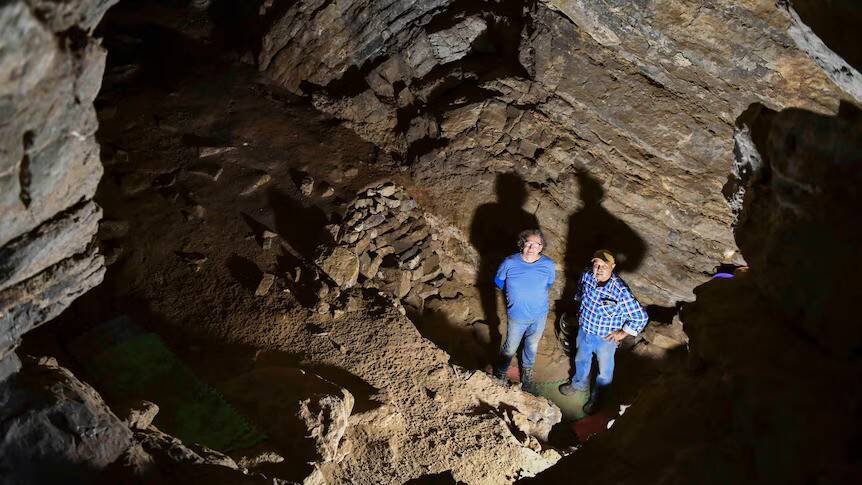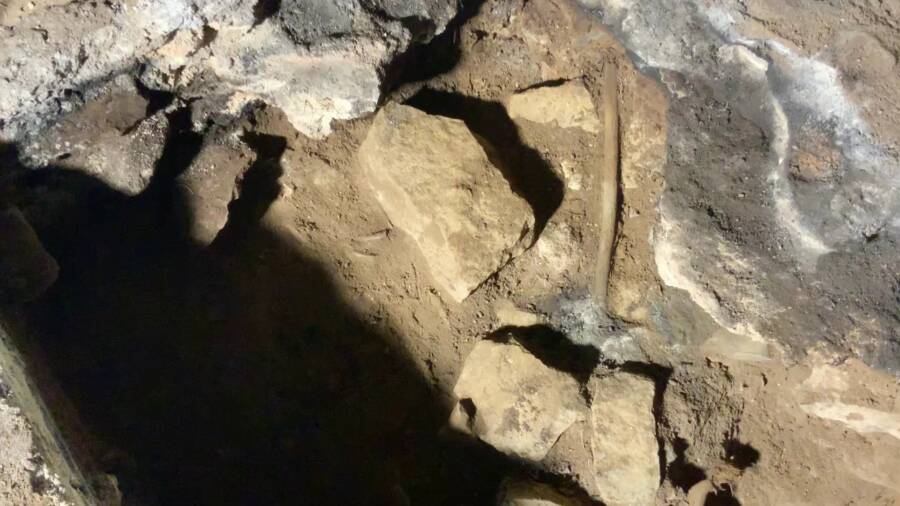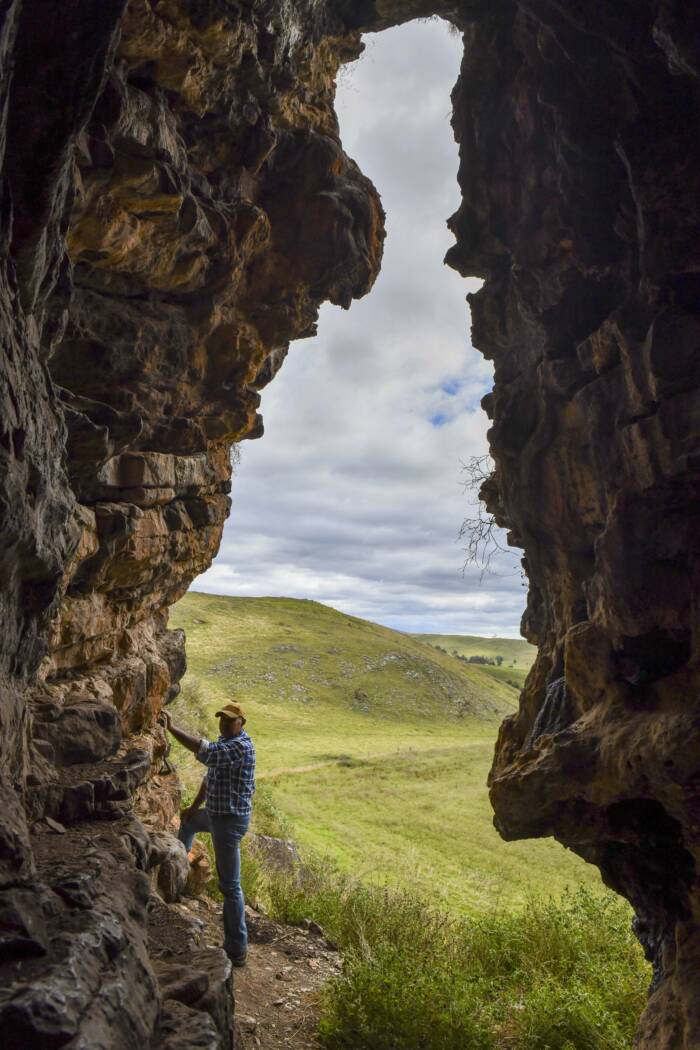Archaeologists digging inside Cloggs Cave found ceremonial sticks smeared with animal or human fat that were once used in Gunaikurnai rituals to cure illness.

Gunaikurnai Land and Waters Aboriginal CorporationResearchers inside Cloggs Cave, where evidence of prehistoric Aboriginal rituals was discovered.
Deep inside a cave in the Gippsland region of southeastern Australia, researchers recently came across the ashy remains of a bonfire and a few sticks of Australian pine. At first glance, it looked like the sticks were burned just yesterday. However, it soon became clear that they were actually set alight between 11,000 and 12,000 years ago, and they represent the oldest-known wooden artifacts ever found in Australia.
Researchers say that these sticks were part of a ritual conducted by the Aboriginal Gunaikurnai people in a ceremonial tradition that stretches back 500 generations.
Evidence Of Prehistoric Aboriginal Rituals Inside Australia’s Cloggs Cave

Monash UniversityProfessor Bruno David and Uncle Russell Mullett inside Cloggs Cave, which has been used in Aboriginals rituals for 25,000 years.
According to a statement from Australia’s Monash University, researchers explored Cloggs Cave in partnership with the Gunaikurnai Land and Waters Aboriginal Corporation (GLaWAC) between 2019 and 2020. As they revealed in a new study published in Nature Human Behaviour, what they found deep inside the cave was nothing less than extraordinary.
There, they uncovered two small fireplaces, one no bigger than a human palm, both of which had a stick of Australian pine (Casuarina) among the ashes.
These fireplaces were not used for cooking or heating and there were no animal remains nearby. Instead, the sticks had been carefully smeared with animal or human fat and burned at a low temperature for a short period of time between 11,000 and 12,000 years ago.
Researchers believe that they were used for a Gunaikurnai ritual. These wooden sticks are thus Australia’s oldest-known wooden artifacts, and the cave is the site of one of the earliest human rituals ever documented.

Gunaikurnai Land and Waters Aboriginal CorporationWhat remains of one of the ritual fireplaces.
The Gunaikurnai Ritual That’s 500 Generations Old
The ritual was likely performed by Gunaikurnai healers called mulla-mullung. Deep within caves, which were used for the performance of rituals and not as residential places, the mulla-mullung would conduct the ritual in order to heal someone’s illness.
They would attach something belonging to the sick person to a stick of Australian pine, then place it at an angle in a small fire. The mulla-mullung would then chant the name of the sick person until the stick fell.

Gunaikurnai Land and Waters Aboriginal CorporationGunaikurnai Elder Uncle Russell Mullett at the entrance of Cloggs Cave.
Such rituals were documented by Alfred Howitt, a 19th-century English geologist and ethnographer who migrated to Australia in the the 1850s and published what he’d learned about Gunaikurnai rituals in 1887. Howitt described “sorcerers” and “wizards” who performed rituals in caves.
“The Kurnai practice is to fasten the article [something that belonged to the victim] to the end of a throwing stick, together with some eaglehawk feathers, and some human or kangaroo fat,” Howitt wrote.
He continued: “The throwing stick is then stuck slanting in the ground before a fire, and it is of course placed in such a position that by-and-by it falls down. The wizard has during this time been singing his charm; as it is usually expressed, he ‘sings the man’s name,’ and when the stick falls the charm is complete. The practice still exists.”
For Gunaikurnai elders today, the discovery of sticks in Cloggs Cave are an incredible reminder of their culture’s long and rich history.
“For these artifacts to survive is just amazing,” said Gunaikurnai Elder Uncle Russell Mullett. “They’re telling us a story. They’ve been waiting here all this time for us to learn from them. A reminder that we are a living culture still connected to our ancient past.”
After reading about how researchers came across the oldest-known wooden artifacts in Australia, look through these photos of modern “witch doctors” from around the world. Then, discover the story of the Yowie, the cryptid known as Australia’s Bigfoot.





